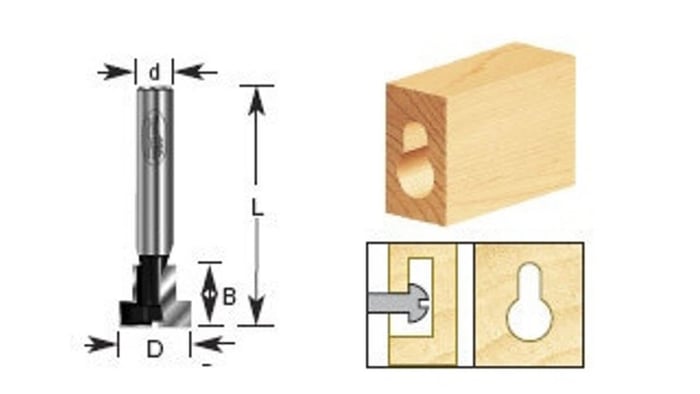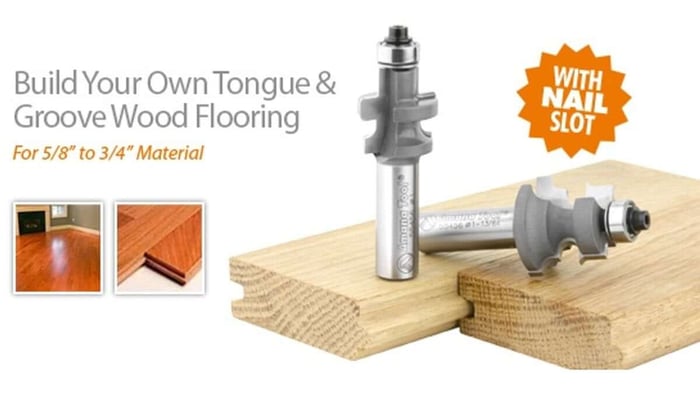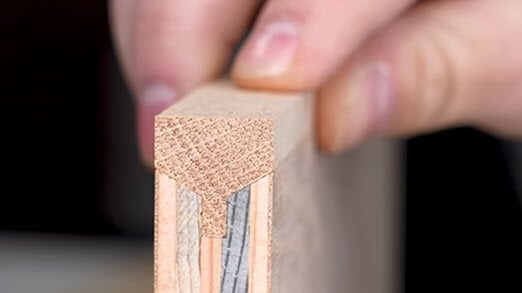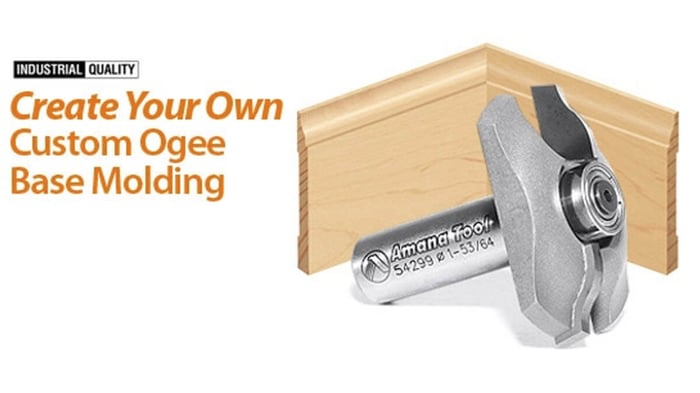
Router Bits for Baseboards
One of the easiest ways to dress up a room is to replace the skimpy baseboards with a wide, bold profile. Amana offers classic ogee profiles in two sizes so that you can choose a size that best fits with the architectural details in the room. For quick easy installation we recommend that you attach the molding to the top of the base. This method greatly simplifies installation by allowing for a butt joint on inside corners.
Baseboards, also known as baseboard trim or skirting boards, are an essential element of interior design and construction. They serve both functional and aesthetic purposes in a room. Here’s an overview of what baseboards are and their various aspects:
Definition and Purpose
- Definition: Baseboards are narrow boards that run along the bottom of interior walls, covering the joint between the wall and the floor.
- Functional Purpose: They protect the wall from kicks, abrasions, and furniture damage. They also cover any gaps or imperfections where the wall meets the floor.
- Aesthetic Purpose: Baseboards can enhance the overall look of a room, adding a finished appearance and sometimes providing a contrasting trim that can complement the decor.
Amana Tool 54297 Carbide Tipped Base Molding Ogee Edge Detail
Materials
- Wood: The most traditional material, offering a classic look. It can be painted or stained to match the room's decor.
- MDF (Medium-Density Fiberboard): A cost-effective alternative to wood that can be easily painted.
- PVC and Vinyl: These materials are water-resistant and durable, making them suitable for areas with high moisture, like bathrooms and kitchens.
- Composite Materials: These combine various materials to offer enhanced durability and resistance to moisture and pests.
Styles
- Standard/Base Molding: Simple, straight lines, often used in modern or minimalist interiors.
- Beveled: Slightly sloped edges that provide a subtle decorative effect.
- Colonial: Features more intricate designs and curves, suitable for traditional or classic interiors.
- Contemporary: Clean, straight lines with minimal detail, perfect for modern homes.
- Ornate: Highly detailed with intricate designs, ideal for period homes or luxurious interiors.
Installation
- Preparation: Ensure walls and floors are clean and even. Measure and cut baseboards to fit.
- Tools Needed: Saw (miter saw recommended), hammer or nail gun, measuring tape, level, adhesive (optional).
- Steps:
- Measure and cut the baseboards to the required lengths.
- Attach them to the wall using nails, screws, or adhesive.
- Use a level to ensure they are straight.
- Fill any gaps or holes with caulk or wood filler.
- Sand and paint or finish as desired.
Maintenance
- Cleaning: Regular dusting and occasional washing with a mild detergent to remove dirt and scuffs.
- Repairs: Address any chips, cracks, or damage in your baseboards by sanding and repainting. For significant damage, sections may need to be replaced.
Amana Tool 54299 Carbide Tipped Base Molding Ogee Edge Detail w/ Ball Bearing
Trends
- Tall Baseboards: Adding height to baseboards can create a more dramatic effect and make a room feel more elegant. Note that in smaller rooms, or rooms with lower ceilings, tall baseboards can potentially make the space feel more cramped.
- Contrasting Colors: Using a different color for baseboards compared to the walls can add visual interest and define spaces.
- Integrated Lighting: Some modern designs incorporate LED lighting in or above baseboards for a subtle, ambient effect.
Baseboards play a crucial role in interior design, offering both practical benefits and opportunities for creative expression. Whether opting for simple or ornate styles, choosing the right baseboards can significantly enhance a room's overall look and feel.
Router Bits to Make Baseboards
Crafting baseboards often involves using a variety of router bits to achieve different profiles and finishes. Here are some commonly used router bits for this purpose:
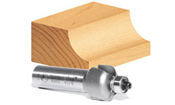 |
Cove Bits: Profile: Create a concave, rounded edge. Usage: Often used for creating a decorative edge on the top of baseboards, adding a classic look. |
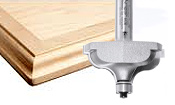 |
Ogee Bits: Profile: Produce an S-shaped curve with both concave and convex sections. Usage: Ideal for adding elegant, traditional details to baseboards. |
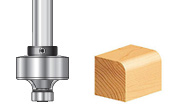 |
Round Over Bits: Profile: Create a smooth, rounded edge. Usage: Used to soften the edges of baseboards, making them less sharp and more visually appealing. |
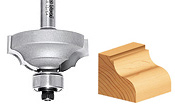 |
Beading Bits: Profile: Form small, half-round beads along the edge. Usage: Add intricate, decorative detailing to baseboards, giving them a more ornate appearance. |
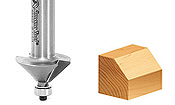 |
Chamfer Bits: Profile: Create a beveled edge. Usage: Useful for giving baseboards a modern, angular look. |
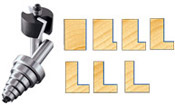 |
Rabbet Bits: Profile: Cut a step-shaped profile on the edge of the wood. Usage: Often used to create joints or recesses for fitting pieces together, sometimes seen in more complex baseboard designs. |
 |
Core Box Bits: Profile: Produce a rounded, concave groove. Usage: Used for adding decorative grooves and details to baseboards. |
 |
Classical Bits: Profile: Create traditional, ornate profiles with multiple curves and steps. Usage: Ideal for replicating historical or period-accurate baseboard designs. |
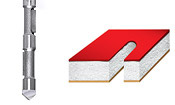 |
Panel Pilot Bits: Profile: Designed for cutting straight, deep cuts. Usage: Often used for cutting out sections of baseboards for outlets or other wall fixtures. |
Tips for Using Router Bits on Baseboards:
- Test Cuts: Always make test cuts on scrap pieces of wood to ensure the profile is correct and the bit is set at the right depth.
- Multiple Passes: For deeper cuts, make multiple shallow passes rather than a single deep cut to prevent tear-out and achieve a cleaner finish.
- Sharp Bits: Ensure your router bits are sharp to avoid splintering and to achieve a smooth finish.
- Steady Speed: Maintain a consistent speed while routing to prevent burning and ensure an even profile.
- Safety: Always use appropriate safety gear, including eye and ear protection, and follow safe routing practices.
Using the right router bit can greatly enhance the appearance of your baseboards, giving them a professional and polished look.

Amana offers classic ogee profiles in two sizes so that you can choose a size that best fits with the architectural details in the room.





